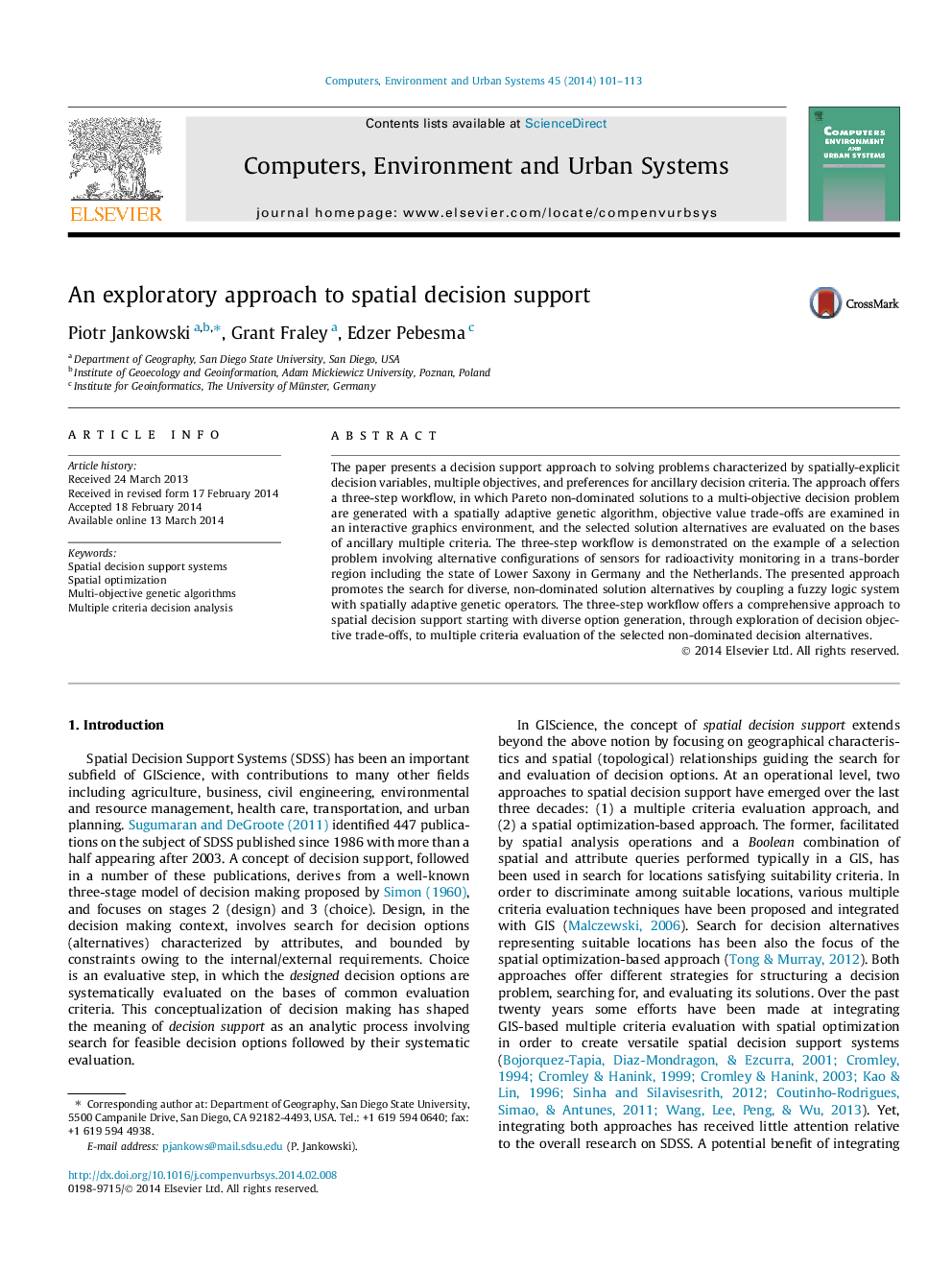| Article ID | Journal | Published Year | Pages | File Type |
|---|---|---|---|---|
| 506390 | Computers, Environment and Urban Systems | 2014 | 13 Pages |
•We present an approach for generating and evaluating spatial decision alternatives.•A fuzzy logic system guides a multiple objective genetic algorithm.•Spatially adaptive genetic operators promote Pareto-efficient solutions.•Trade-offs in decision objectives are examined in an interactive environment.•Robustness of selected alternatives is evaluated with ancillary criteria.
The paper presents a decision support approach to solving problems characterized by spatially-explicit decision variables, multiple objectives, and preferences for ancillary decision criteria. The approach offers a three-step workflow, in which Pareto non-dominated solutions to a multi-objective decision problem are generated with a spatially adaptive genetic algorithm, objective value trade-offs are examined in an interactive graphics environment, and the selected solution alternatives are evaluated on the bases of ancillary multiple criteria. The three-step workflow is demonstrated on the example of a selection problem involving alternative configurations of sensors for radioactivity monitoring in a trans-border region including the state of Lower Saxony in Germany and the Netherlands. The presented approach promotes the search for diverse, non-dominated solution alternatives by coupling a fuzzy logic system with spatially adaptive genetic operators. The three-step workflow offers a comprehensive approach to spatial decision support starting with diverse option generation, through exploration of decision objective trade-offs, to multiple criteria evaluation of the selected non-dominated decision alternatives.
